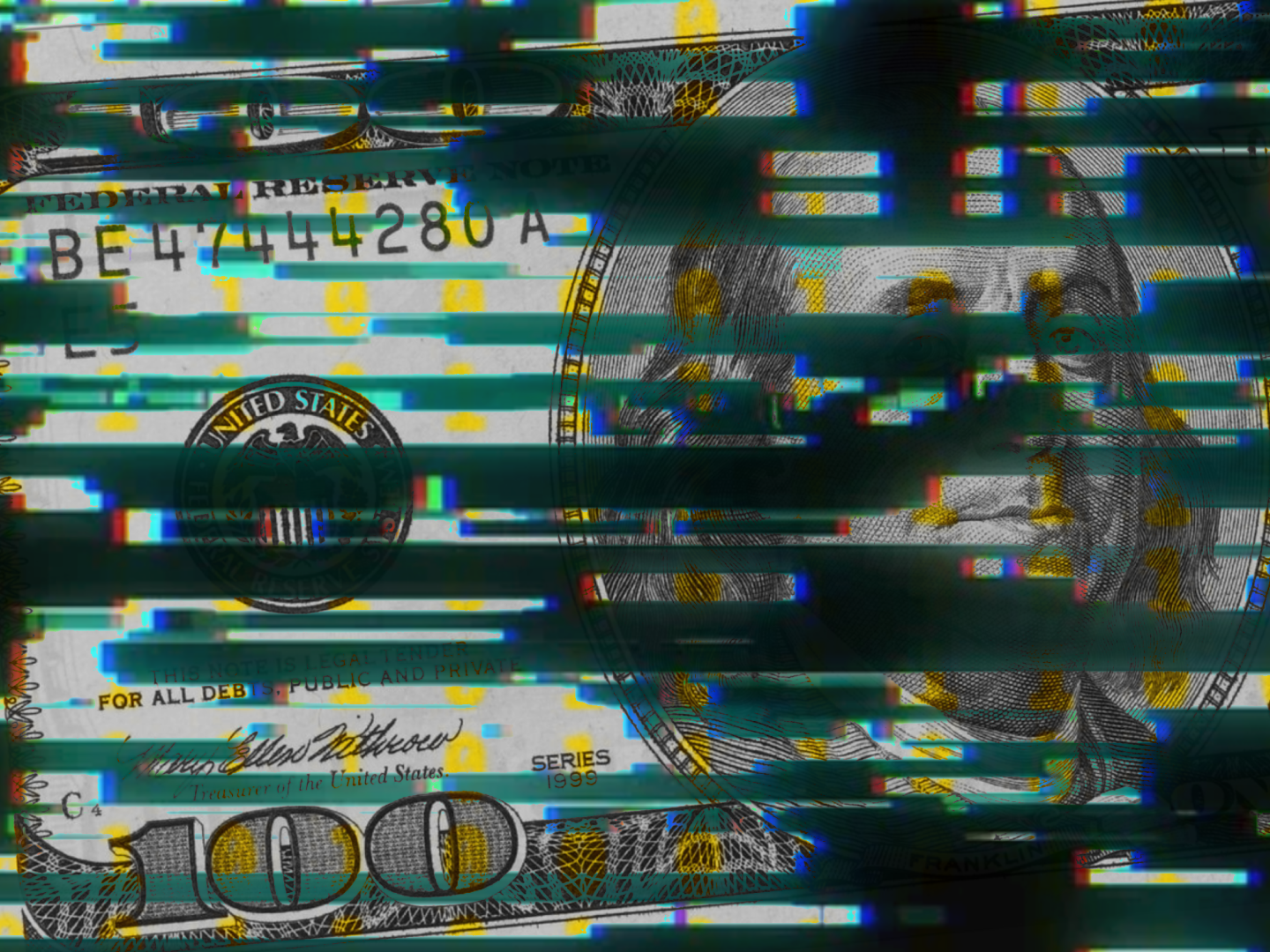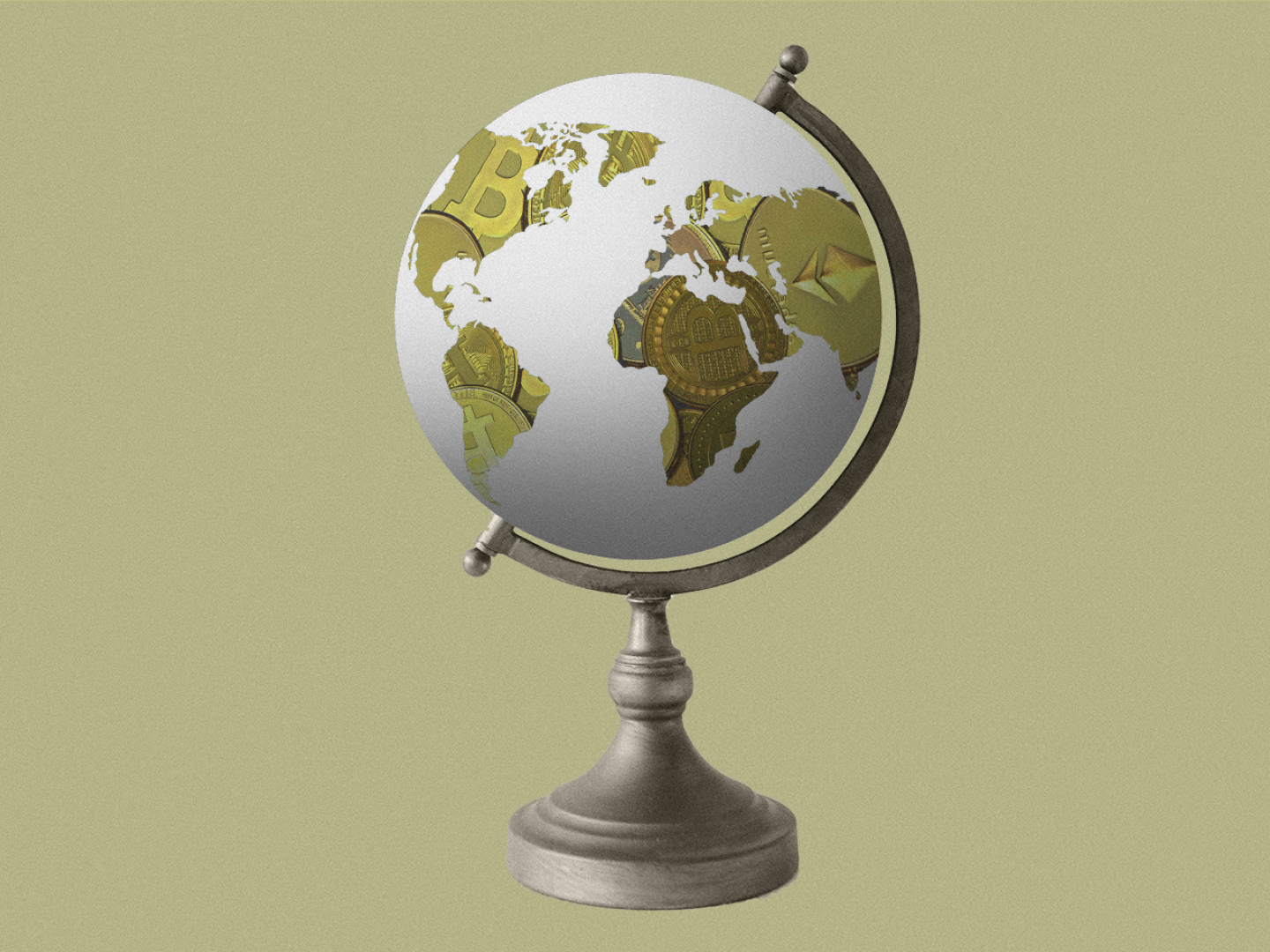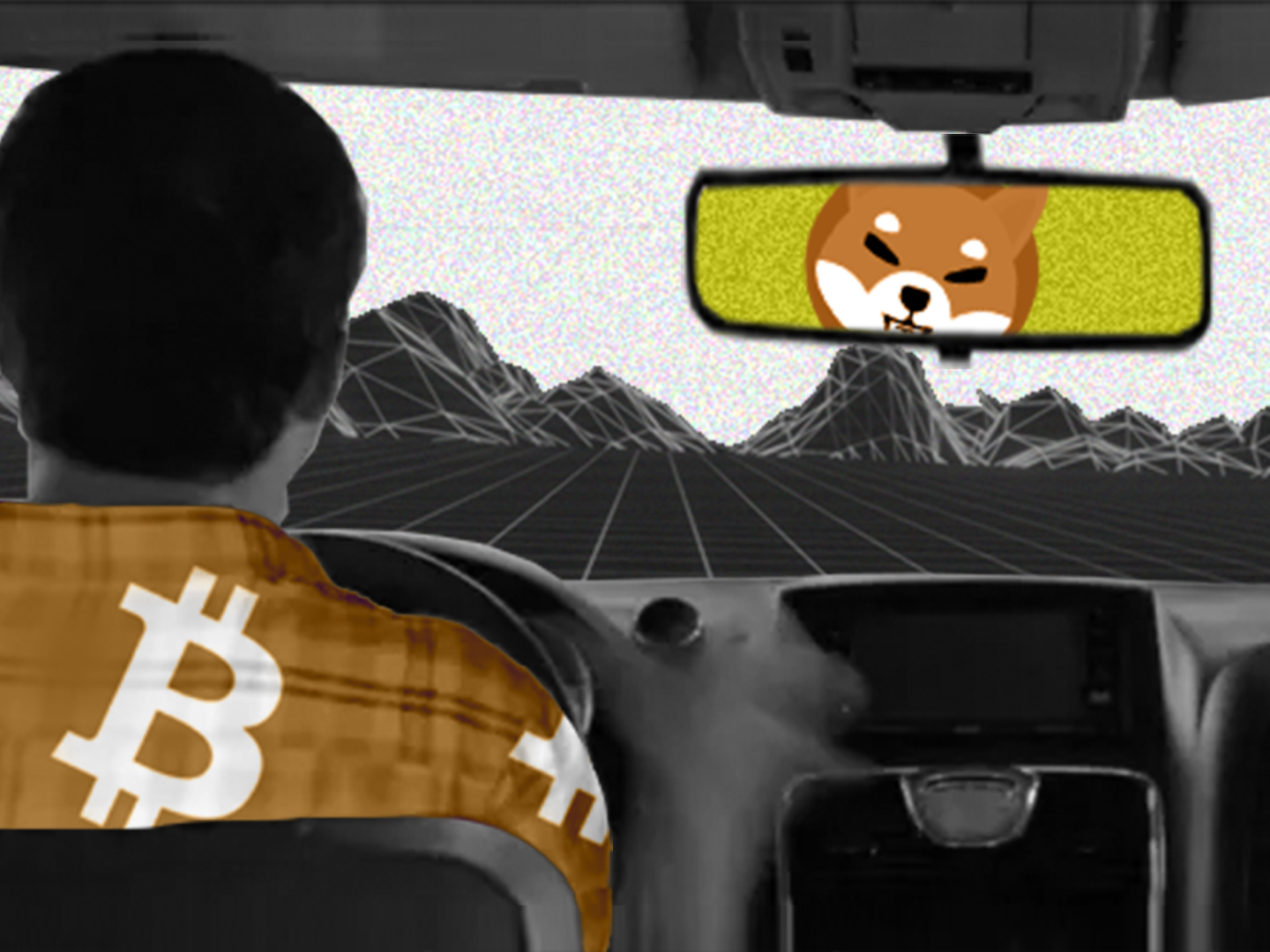Cryptocurrency is a revolution, but maybe it’s not the revolution you imagined. That’s because more than anything, crypto is a revolution in accounting.
While most people might not think much about accounting, without it we’d still be hunting and gathering instead of blasting satellites into space or communicating instantly on a network that circles the globe. Without accounting, you wouldn’t be reading this article on your iPad, or streaming music on Spotify or renting an Airbnb for your next vacation.
Without accounting, there’s no commerce or trade. Without commerce, there are no planes, no trains, no tractors, no steam engine, no skyscrapers or smartphones. We’d have no nation-states, no boats, no shipping containers traveling all over the world ferrying goods from the far corners of the Earth.
Dan Jeffries is a futurist, systems thinker and author. This article is part of CoinDesk’s Future of Money Week, a series exploring the varied (and sometimes weird) ways value will move in the future.
We’ve only had two accounting revolutions in the entire history of the world before now and both presaged a massive uptick in societal complexity and innovation.
Crypto is the third revolution in accounting. Just like the two that came before, it will mean a huge surge forward in new ideas and technologies that we’re only beginning to understand.
To understand why we just have to turn back the clock to the first two revolutions before racing forward into the future.
The first wave: single-entry accounting
Single-entry accounting goes back to our earliest civilizations. As soon as we could write, we started writing down who owed what to whom.
Hunter-gatherers had no need for accounting – that we know of – because they shared everything communally and their lives were spent in perpetual motion, so property was transient to them.
Read more: The Future of Money: 20 Predictions
We can trace some of the first examples of single-entry accounting to the Sumerians about 5,000 years ago on cuneiform tablets. Those tablets came from Uruk, one of the first great cities of the world. It was a city created by the people who famously gave us the “Epic of Gilgamesh,” the world’s oldest recorded story.
Single-entry accounting is incredibly simple: You just put a note in a ledger. “So-and-so owes $50,” for example.
But single-entry accounting can only take a civilization so far. A city like Uruk was massive by ancient standards, but it was only 5,000 to 6,000 people, not much bigger than a small town today.
SINGLE ENTRY ACCOUNTING
In about 3200 BC the first spreadsheet was invented. Farmers began documenting information using clay tablets in the earliest form of human writing ever discovered called Cuneiform. They partitioned their clay tablet into rows, columns, and cells. pic.twitter.com/O3wV9j88LK
— BITCOIN☂️⚡?? 丰 (@Cipherhoodlum)
The only accountants back then were the king’s brother because you really had to trust that guy. All he had to do was wipe away a single line in the ledger and that money no longer existed. There was no way to verify, no way to audit and no way for two people to agree. The ledger was the only receipt and that made it brittle and prone to error and fraud.
It also made trade an extended family affair. The kings and queens traded with other nobility and mostly they kept all the money for themselves, leaving the rest of us to starve or scratch out a subsistence living. Powerful clans dominated, rising and falling in great waves over time. National borders were endlessly fluid, expanding and collapsing back as one powerful ruler came to power, only to die off or get killed later, his influence collapsing.
Single-entry accounting was powerful enough to sustain the world into the height of the Roman empire, with the city of Rome reaching 60 million to 70 million people at its peak. While the Romans never developed double-entry bookkeeping, they did have a prototype system that kept track of receipts and expenditures before their civilization started to decline over the next thousand years.
Still, single-entry accounting was almost all the ancient bean counters needed to sustain those early civilizations that dominated the Earth, keeping track of everything from taxes and tithes to tradable goods and services.
But for society to make the next leap, we needed a breakthrough.
The second wave: double-entry accounting
By the 1400s, single-entry systems really started to show their age.
Now we had ships circling the globe, traveling from near and far to bring goods from around the world, everything from salted fish and meat, to wine and beer, to exotic spices and fabrics. Because we could range over huge distances that meant we could trade with people we’d never met before, who weren’t blood relatives or even distant relatives in our tiny clan.
As boats became the most important way to carry goods to distant lands, port city-states like Venice became powerhouses of international trade between east and west, thanks to their proximity to both water and saltworks to preserve everything. But with so much trade going on, single-entry accounting showed deeper and deeper cracks. With single entry, it’s super easy to make data-entry errors. People’s books soon turned into a hopeless mess of conjecture and lost money. The more trades that are stacked up, the more errors.
Multiple civilizations, from the Italians in the 1300s, to the ancient Koreans, to the Second Muslim Caliphate all developed versions of a double-entry system but the systems never fully caught on. It took another radical invention to solidify the rise of double-entry: the printing press.
While money and accounting make the world go round, the printing press was the most important invention in the history of the world. Without it, knowledge would have remained siloed or lost. People would develop a breakthrough in one area, only to die off and leave no trace of it, forcing others who came later to discover it again. The printing press let people record the world’s most important knowledge and then make hundreds or thousands of copies of it, meaning it could be distributed more widely and enlighten more minds. Now ideas survived and circulated, instead of dying with their creators.

By the 1400s, a Franciscan friar, Luca Bartolomeo de Pacioli, finally codified the double-entry system, and the printing press assured its wide distribution. It swiftly became the standard for Venetian merchants, all thanks to the preserving power of print and their need to trade with foreign lands.
It’s no coincidence that world trade surged after that. Goods and services could flow easily around the world, and it wasn’t long before world trade grew faster and faster. Now people could easily do business with people they didn’t know and keep records of it.
Fast forward to today and we still use a double-entry system. If you do your taxes in TurboTax or keep your books in Quickbooks, you’re using double entry. Double entry keeps track of both credits and debits. It ensures that each side in the transaction has a receipt that proves what happened, and they don’t have to rely on the other’s record completely. This let the ancient traders of the world do business with people they didn’t know.
Read more: It’s 2031. This Is the World That Crypto Created – Dan Jeffries
But just as single entry once started to show its cracks in the ancient world, double entry is starting to show its cracks in the modern world.
Take a company like Enron. They did all kinds of things to cook the books, even conspiring with an outside auditor to make it look more legitimate. They managed to hide billions in debt and defraud investors for years before their crimes finally came crashing down around them.
That’s where triple-entry accounting comes in.
The third wave: triple-entry accounting
Bitcoin was the world’s first working example of triple-entry accounting.
Instead of just two entries, a debit and a credit, it uses a global, cryptographically secured ledger with a third entry that tracks all the money and where it lives at any single point in time. As the money moves, the ledger gets updated as the final system of account.
A blockchain is really a way for us all to agree on objective reality. A transaction closes at a specific time. For instance, this is where the money was on this day at 6:13 AM, and days later it was arranged this way.
We’ve seen theoretical ideas of triple entry, first from Yuri Ijiri, an economics professor, who proposed a novel momentum accounting system with a third entry in 1989, and then later from Ian Grigg in 2005, who proposed a triple-entry system that uses the third entry to track state. Grigg’s system fits more closely with how cryptographic ledgers work today, and it’s likely Satoshi read that proposal when working on the original Bitcoin code.
Bitcoin was the first example that worked in the real world instead of just on paper. The code proved it was more than just a theory or a novel idea. It could power an international monetary system with no centralized authority to run it. It has spawned thousands of other coins that build on its ideas and still we’re just at the beginning of the triple-entry revolution.

The world of tomorrow
Triple-entry accounting will smash the old financial system and give rise to a new one built on dynamic money that flows around the world with incredible ease.
We’re in the earliest possible stages of that revolution now. We’ve exploded past simple currency, and we’re already seeing the first radical innovations to spawn from the original idea of a triple-entry ledger, like NFTs, which will accelerate the $370 billion collectibles market, or decentralized finance (DeFi), which will change the way we do finance.
But we still have so much further to go, and here’s how I see it happening:
Cash will die, replaced by central bank digital currencies (CBDCs). Over the next hundred years, algorithms will start to replace old men in suits making monetary policy. AI agents will monitor economic factors in real-time, and U.S. Federal Reserve policy will be nothing but a series of intelligent algorithms automatically expanding or contracting the money supply, setting rates and distributing e-dollars.
Increasingly nation-state money will transform, replaced by international money, as multinational e-currency radiates outwards and expands to new countries. As more nations forgo their own digital money in favor of CBDCs initially created by China, the U.S. and the EU, increasingly those money supplies will become an island of their own, with their own boards and governors that transcend the individual countries. The money supply will start to shift with the policies of a broader and broader coalition of countries, shaping everything from politics to economic policy. Each country will have a stake, with nation-state validator supernodes in a proof-of-stake-like consensus system where they’ll vote on change rather than make changes unilaterally.
Central bankers will watch economic statistics flowing in real-time on massive dashboards. Increasingly powerful AIs will make micro-adjustments to policy as they pull in a torrent of data: satellites watching ships surge around the world with machine learning object recognition giving them near-perfect trade statistics; trillions of RFID tagged items will track themselves on shipping containers; autonomous trucks will report up to the minute fuel and delivery time as they race across specially designed highways at speeds too fast for human drivers; the minutest fluctuations in consumer spending in small towns and big cities will change lending rates and give us a minimum wage that adjusts seasonally instead of every few decades.
Taxes won’t get filed once a year; they’ll get pulled out of people’s accounts constantly, with a smart contract-driven system that knows what you owe. When you have a problem, you’ll need to call a clearing center to get your refund. But you won’t wait until the end of the year: You’ll get it as soon as you manage to get off hold and get to an operator, who blips it back to you instantly.
A parallel economic operating system will surge out of today’s crypto, with privacy-driven, decentralized economies springing out of apps and individual creators. People won’t fully trust the gated, highly surveilled nation-station spawned money; they’ll need an alternative, which focuses on privacy. Everyone will have CBDCs but they’ll have decentralized money too and switching between it will be as easy as a finger swipe. Tomorrow’s children won’t own a credit card, and they won’t even know what it is. They will zap money across an encrypted messenger or snap a picture of a QR code on their smart glasses and smart contacts.
Entire families will have a shard of a key to a trust or the whole family’s pool of money. Think of it as a personalized family bank. Mom will set rules on how much Junior can spend with a simple dashboard as he heads out with his friends to the mall.
When a father or mother passes away, the rules of the trust will trigger a third-party oracle to check and the contract will automatically disperse the money at pre-timed intervals, no lawyer, probate or holding company required.
Millions of people will pool their money into decentralized lending pools, getting dividends and payouts that make current bank interest look paltry by comparison. When tomorrow’s people need a loan for school, or building a house, or starting a business, they’ll go to the lending software and borrow from those millions of people instead of a bank.
People will walk into a cafe and love the food so much that they want to invest in the cafe. No longer will shares in business be restricted to giant companies, everything will be sliced up into shares from the tiniest mom and pop shop to everyday items like bikes and video game consoles. Investors will pull up a private, small business shares platform and research the cafe’s sales after agreeing to a privacy contract for prospective investors. The data in the ledger will decrypt, and they’ll study the anonymized sales over 10 years, all without ever having to have direct access to the company’s books.
Kids will run into a convenience store and just grab everything and walk out as if they’re stealing. But they won’t have stolen a thing. The AI vision system will track everything they snatched and send the charge right to their smart wallet. They’ll have authorized charges to the store via a key exchange, and the smart contract will have the right to take out anything less than 200 e-USD and prompt for authorization above that amount.

A week later maybe you were in the store, and the store got hacked. Hackers tried to charge an extra 200 e-USD to you to get past the contract limit, but your little AI watcher agent caught it and stopped the fraud from happening. You never had to call a fraud department and beg for your money back.
From the wildly futuristic to the everyday mundane
All of this may seem far out and crazy, but the seeds of all of it are here right now. How could something as simple as a new accounting system drive all that sci-fi level technology and societal change?
But that’s the nature of technological change. It’s slow and then suddenly fast and furious, rocketing up an exponential curve.
A simple historical parallel is the film industry. When Steven Spielberg made the original “Jurassic Park” with the first breakout CGI effects and digital film editing in 1993, he said, “This is the way all films will be made.” As Alexander Huls wrote in the Atlantic, “George Lucas, who was also there, recalled ‘it was like one of those moments in history, like the invention of the light bulb or the first telephone call … A major gap had been crossed and things were never going to be the same.’”
Yet it seemed crazy to most people. Many filmmakers resisted. They didn’t think CGI could match analog effects or that digital editing could ever be as fast and fluid as physical editing. But they were wrong. Now we don’t call it “digital filmmaking.” We just call it “filmmaking.” It’s incredibly rare for anyone to use physical film anymore, not to mention scissors to cut it apart and paste it back together. We do it all on robust digital dashboards.
And just as digital dinosaurs replaced animatronics, so will the digital ledgers of tomorrow replace the dinosaur money and policies of today. Digital ledgers, cryptographic systems and triple-entry accounting won’t be novel or new. They’ll just be the way things are done.
The perfect storm of digitization, AI agents, cryptography and triple-entry accounting will create a real-time world, one where peer-to-peer lending is possible at scale and where NFTs go from novelty to real legal ownership contracts. Tomorrow is a place where decentralized identities connect you to everything from your work to your national voting system, and algorithms adjust how much money is in circulation based on real-time economic statistics. GDP won’t have a lag of months, it will get tracked in real-time as ships surge over the oceans because we’ll know exactly how many containers sit in their cargo holds. When you buy a bike, it will have a smart contract that transfers ownership and if someone steals it, it will be a lot harder to flip because a buyer can check who really owns it against the third entry in the ledger.
The revolution that bitcoin unleashed on the world is about so much more than money. It’s the revolution in how we track everything from votes, to goods and services, to ownership of virtual and real-world property, and more.
And tomorrow’s children won’t call it triple-entry accounting.
They’ll just call it accounting.
